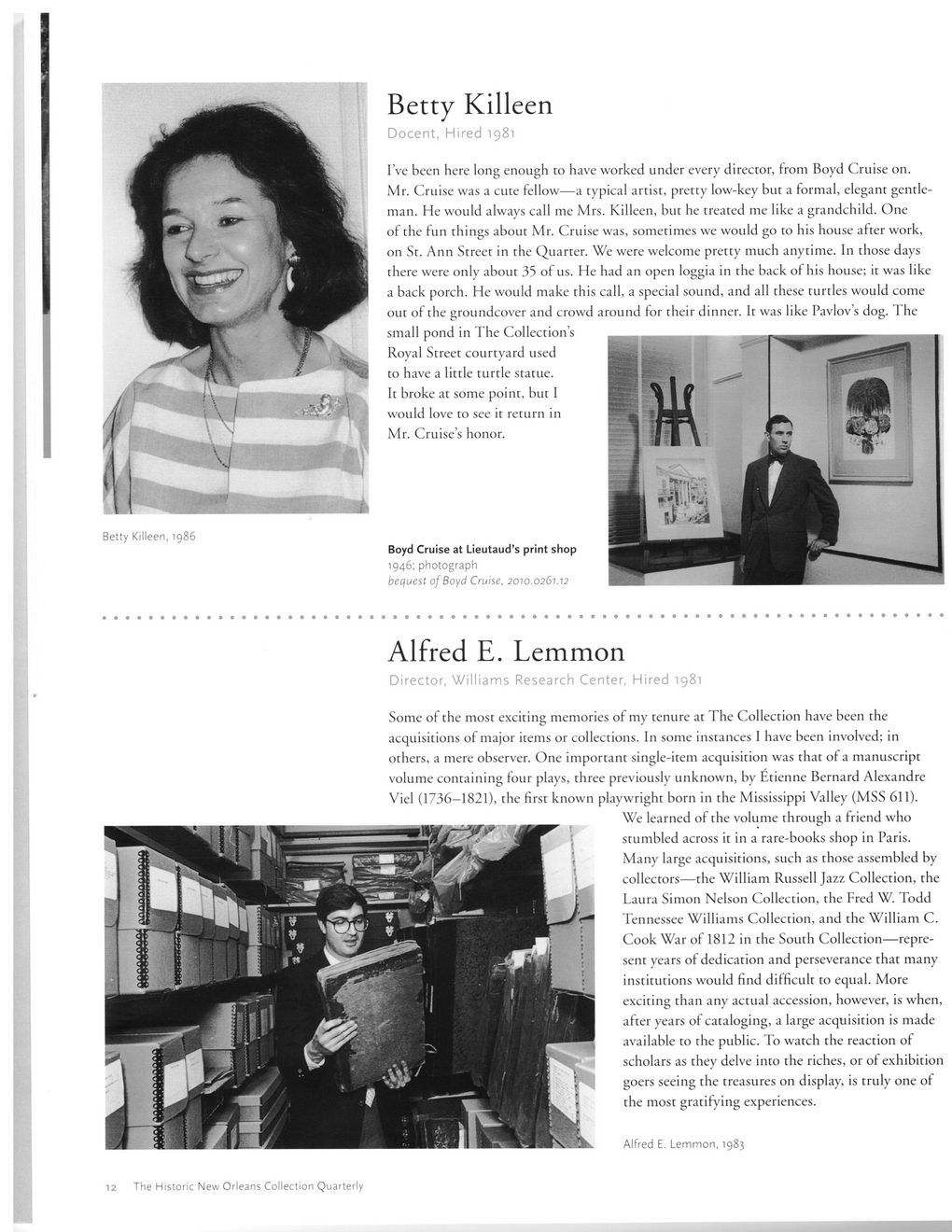This text was obtained via automated optical character recognition.
It has not been edited and may therefore contain several errors.
Betty Killeen, 1986 Betty Killeen Docent, Hired 1981 I’ve been here long enough to have worked under every director, from Boyd Cruise on. Mr. Cruise was a cute fellow—a typical artist, pretty low-key but a formal, elegant gentleman. He would always call me Mrs. Killeen, but he treated me like a grandchild. One of the fun things about Mr. Cruise was, sometimes we would go to his house after work, on St. Ann Street in the Quarter. We were welcome pretty much anytime. In those days there were only about 35 of us. He had an open loggia in the back of his house; it was like a back porch. He would make this call, a special sound, and all these turtles would come out of the groundcover and crowd around for their dinner. It was like Pavlov’s dog. The small pond in The Collection’s _________________ Royal Street courtyard used to have a little turtle statue. It broke at some point, but I would love to see it return in Mr. Cruise’s honor. Boyd Cruise at Lieutaud’s print shop 1946; photograph bequest of Boyd Cruise, 2010.0261.12 Alfred E. Lemmon Director, Williams Research Center, Hired 1981 Some of the most exciting memories of my tenure at The Collection have been the acquisitions of major items or collections. In some instances I have been involved; in others, a mere observer. One important single-item acquisition was that of a manuscript volume containing four plays, three previously unknown, by Etienne Bernard Alexandre Viel (1736-1821), the first known playwright born in the Mississippi Valley (MSS 611). We learned of the volume through a friend who stumbled across it in a rare-books shop in Paris. Many large acquisitions, such as those assembled by collectors—the William Russell Jazz Collection, the Laura Simon Nelson Collection, the Fred W. Todd Tennessee Williams Collection, and the William C. Cook War of 1812 in the South Collection—represent years of dedication and perseverance that many institutions would find difficult to equal. More exciting than any actual accession, however, is when, after years of cataloging, a large acquisition is made available to the public. To watch the reaction of scholars as they delve into the riches, or of exhibition goers seeing the treasures on display, is truly one of the most gratifying experiences. Alfred E. Lemmon, 1983 12 The Historic New Orleans Collection Quarterly

New Orleans Quarterly 2016 Spring (12)